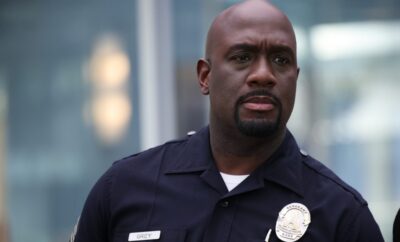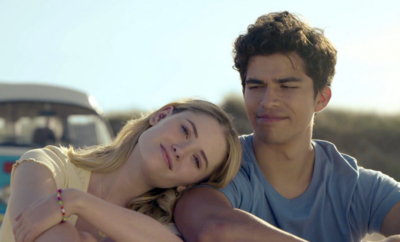Features
Marvel’s Runaways: One Last Adventure
By: Marnie Faith
“Marvel’s Runaways” is one of the final standing MCU television series. The show follows six teenagers that initially can just about tolerate each other; however, they unite once they discover that their parents are running a sinister organization known as PRIDE. Alongside this, each teen unearths the fact they hold superhero abilities. Together they form a strong familial-like bond that ushers them to stop their parents from sacrificing the runaway youths of America and, inevitably, destroying the world. There’s been countless coverage over the years comparing the show to its comic book universe predecessors, which has often resulted in the quality of the show itself being overlooked. Follow along as we celebrate all of the incredible things to take away from the show from the diverse ensemble, redefining of genres and the messages the series instills in viewers.
The long-awaited Season Three trailer of “Marvel’s Runaways” was a bittersweet release for the majority of fans. No sooner had we witnessed Karolina (Virginia Gardner) being walked down the aisle to marry Nico (Lyrica Okano) did we actually read the full tweet containing the trailer. The words “final season” were sat in plain sight amongst the two hundred and fifty characters, leaving readers unsure whether to be elated or devastated. Though the news that there are no plans for a Season Four doesn’t come as much of a surprise, following the axing of a multitude of Marvel shows, it doesn’t make the loss feel any less great. For a lot of fans, myself included, “Runaways” is more than just a show. It encapsulates so much within its run: defying stereotypes and showcasing a wide range of representation amongst its cast. Not to mention the fact it breaks away from the typical teenage drama stereotype that a lot of mainstream shows continue to feature. It’s a loss that runs deeper than the confirmation of no more heartwarming scenes between Gert (Ariela Barer) and Old Lace. Here’s why, from the forefront “Runaways” proves itself to be a lot greater developed than typical teenage superhero shows or even simply teenager centric shows. The team of Runaways features a multitude of diverse young superheroes from Latina feminist Gert Yorkes who battles life without medication to help manage her anxiety, leader of the group Alex Wilder (Rhenzy Feliz) who is a young black warrior constantly showing us the difficulties faced having to choose between friends and family and to Nico Minoru who is the gothic witch that saves her vulnerability for a select few. The show defies the over-used white washed, male centric prototype that too many superhero ensembles fall victim. It reassures viewers of all demographics that they’re able to be superheroes, too.
Additionally, there is a lot to be said for the way in which writers Josh Schwartz and Stephanie Savage chose to bring this story to life. Whilst the Runaways comic universe has been established since 2003, they didn’t let themselves be confined to it. Instead, they maintained the comic universe as the core of the storytelling, but were sure to adapt and evolve on from this story into something even more engaging. The pace of the show from the beginning differed largely from typical Marvel-esque story telling as gone is the consistently intense action tempo we’re used to from the MCU. Instead, Season One afforded viewers the opportunity to witness each character grow individually, as well alongside each other. The writing acknowledges that the group of teens have had their entire lives turned upside down from uncovering the fact their parents are super-villains all a part of PRIDE, to discovering their superhero abilities and even to facing the truth that they’ll have to run away from the life they’ve always known in order to thwart bad behavior. It’s a lot to take in and viewers are afforded the chance to empathize with that. The show gives focus to the teenagers’ individual developments; they’re allowed to process the life altering changes happening and as a result helps viewers feel more connected to them. We watch Chase Stein (Gregg Sulkin) grow from a high school jock desperate to please his abusive father to deciding to take on a life lead by empathy. We also witness Karolina break away from the Church of Gibborim – a cult like religion that has been part of her upbringing since she was born. The writing style throughout both seasons has allowed viewers to be a part of their journeys, essentially leaving us feeling as though we’re maturing alongside the group.
The diversity of the ensemble doesn’t stop at the teens themselves as the show features an all Asian family in the Minoru’s and all black family in the Wilder’s, as well as LGBT+ representation and Molly Hernandez (Allegra Acosta) finding solitude in her adoptive family amongst the Yorkes’. The LGBT+ representation throughout the show comes in several different characters. Karolina and Nico (a bisexual goth witch falling in love with a glowing lesbian) had Marvel’s first on-screen gay superhero kiss – something that’s been a long time coming! The relationship between Karolina and Nico is something straight out of any sapphic viewers dreams, but “Runaways” made it reality. Throughout the show both characters are given the chance to explore themselves and their identities, without it becoming an overwhelmingly defining feature of their character. Their progression never becomes revolving around their sexuality; it’s just another part of themselves that we discover when we’re meant to. This includes the fact that the writers even went as far as sidelining the straight couples in the show to allow proper room for Karolina and Nico’s development! In a universe in which everything is constantly hanging in the balance of six individuals that never even asked for this, identifying as part of the LGBT+ community isn’t something that wagers as a be all and end all moment. Instead, both Karolina and Nico’s coming out are intertwined with their overall experiences of learning who they truly are. Meanwhile, Xavin (Clarissa Thibeaux) not only pays homage to the comic universe, but also looks to be some long awaited non-binary representation. As a shape shifting Skrull, Xavin doesn’t go by gendered pronouns, instead preferring to be referred to as Karolina’s “betrothed.” The variety of identities throughout the series demonstrates that Marvel are in tune with an ever-progressing society and want to ensure the representation within its shows keeps up with such.
Moreover, none of the Wilder family see themselves fall victim to overused tropes that portray people of color in a negative light. Examples include Catherine Wilder (Angel Parker) not seeing herself portrayed as the hysterical black woman. Instead, she’s poised, collected and often the brains of many PRIDE operations. There is so much to be said for the representation within the show. it goes beyond what most Hollywood shows could only ever hope to achieve. The characters don’t fall into tokenism. Thankfully, a number of minorities are so widely represented within the show’s casting that each character is given their own space to be human, as well as to be flawed. They become free of the pressure to portray blanket representation, instead allowing for each character to bring something new to the table.
Furthermore, the power imbalances between the teens and their parents compared to the ever-strengthening bond amidst themselves demonstrates just how important found family is. We learn early on that the teens were friends as children until they eventually grew apart following the death of Nico’s older sister Amy (Amanda Suk). Thanks to the discovery of the Dinosaur living in the Yorkes’ basement that is telepathically connected to Gert, as well as the fact that their parents are all evil, they eventually find their way back to each other. Viewers see them all grow together, though that isn’t to say everything is peace and harmony amongst the Runaways. At times there are instances in which the parents are banded stronger together than ever whilst the teens relationships are fractured and vice versa. However, the display of the good, the bad and the ugly adds to the authentic familial dynamics formed. It’s integral to remember that at the end of the day, the Runaways are just teenagers trying to navigate the most complicated years so far. Throw in the news that their entire world is about to be shifted and possibly destroyed, it was bound to test their relationships at some point. No matter how intense their arguments become or how heated their disagreements may be, they always find their way back to each other.
Away from all the terror and despair they’re often faced with is the other side of the group that really sets them aside from the rest of the MCU. Though many of the feature MCU films highlight moments of comic relief, that same relief instead establishes itself as a constant throughout “Runaways.” From Gert telling younger sister Molly that her trying out for the dance team is “just reinforcing hegemonic masculinity while marginalizing women’s identity” to Chase’s witty one-liners throughout, the lighthearted tone grounds them to their youth. We, as viewers, are reminded that they’re still kids finding their way beneath all of this.
The departure of “Marvel’s Runaways” from our television screen marks a distinct end of an era for Marvel television series. Though its shelf life has been shorter than what most fans would have hoped for, it has left us with so much to hold on to. The show has redefined the superhero genre, demonstrating that it isn’t always about chauvinism and battling. Instead, we see through the teens that to be a superhero means to stay true to your good intentions, navigating that to find strength from within yourself. Not only this, but having the story told through the viewpoint of the kids has helped validate a lot of societal anxieties that the youth of today are experiencing – many of which are all too quickly brushed off by our adult counterparts. The show, though taking a lot of incidents and making them worst case scenarios, shows that the adults in the world aren’t always the ones who know best or have the purest intentions. Instead, the teens’ moral compass combined with their unified sense of strength speaks volumes for those demographics who feel themselves silenced. “Marvel’s Runaways” has given a voice to a multitude of marginalized groups. It has made those that often feel overlooked the forefront of a superhero show, molded bona fide characters to be their voice and helped them feel not only seen but empowered. So, thank you Marvel, for bringing us five superhero teenagers and letting us feel part of their family. It’s been an unforgettable ride.





You must be logged in to post a comment Login